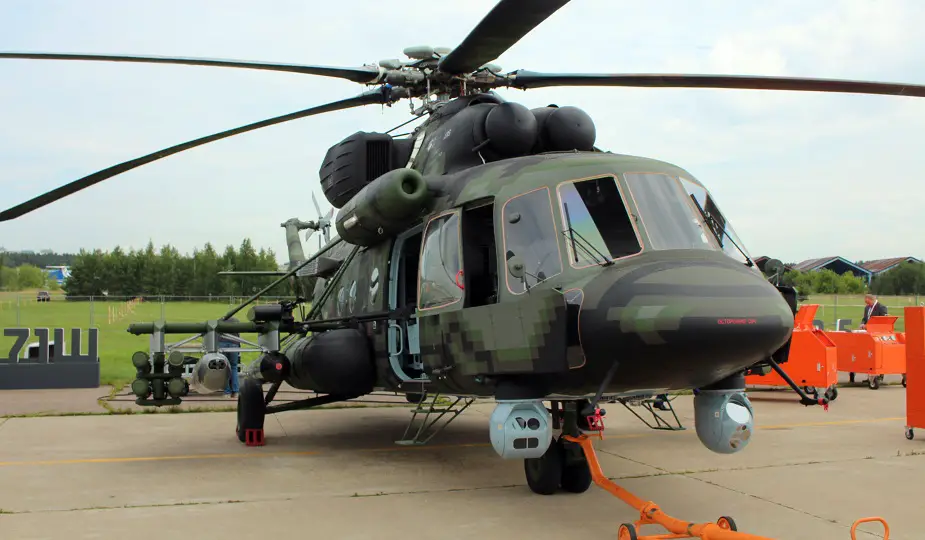A Mil Mi-8AMTSh-VN new helicopter for Special Operations Forces has entered flight tests. Russia’s Defense Ministry signed a contract with Russian Helicopters rotorcraft manufacturer at the Army-2019 international arms show for the delivery of ten latest Mi-8AMTSh-VN special-purpose helicopters. The first stage of the trials is due to be completed in November. Eventually, two more helicopters of this type will join the flights. The Mi-8AMTSh-VN helicopter had been technically designed taking into account the combat experience of employing helicopters in present-day armed conflicts. The helicopters are due to be delivered in 2020-2021.
As its main specific feature, a Mi-8AMTSh-VN helicopter employs two side-mounted 12.7mm forward-firing machine-guns. The helicopter is outfitted with new flight control and navigation equipment, a gyro-stabilized opto-electronic system, a searchlight with an infrared emitter, dual-band lighting equipment and is adapted for using night vision goggles. The high-altitude engines of increased power, the new rotor system, the expanded weapons suite, the enhanced protection and other specifics of the upgraded helicopter increase its combat capabilities and allow employing it for special operations in the most adverse conditions.
In order to increase its combat survivability, the helicopter is outfitted with a digital autopilot system and a defensive aids suite that automatically detects missile launches against the helicopter, jams missile homing warheads and releases heat flares. The crew’s cabin and the helicopter’s main systems are protected by the new armor made of titanium alloy. The floor of the cargo compartment and the helicopter’s sides are shielded up to the windows with the removable lightweight Kevlar armor to protect the crew. The new helicopter has been developed in its special modification, considering the experience of combat operations in Syria.
The Mil Mi-8 (NATO reporting name: Hip) is a medium twin-turbine helicopter, originally designed by the Soviet Union, and now produced by Russia. In addition to its most common role as a transport helicopter, the Mi-8 is also used as an airborne command post, armed gunship, and reconnaissance platform. The Soviet military originally showed little interest in the Mi-8 until the Bell UH-1’s involvement in the Vietnam war became widely publicised as a great asset to the United States, allowing troops to move swiftly in and out of a battlefield and throughout the country. It was only then that the Soviet military rushed a troop-carrying variant of the Mil Mi-8 into production. By 1967, it had been introduced into the Soviet Air Force as the Mi-8.
















